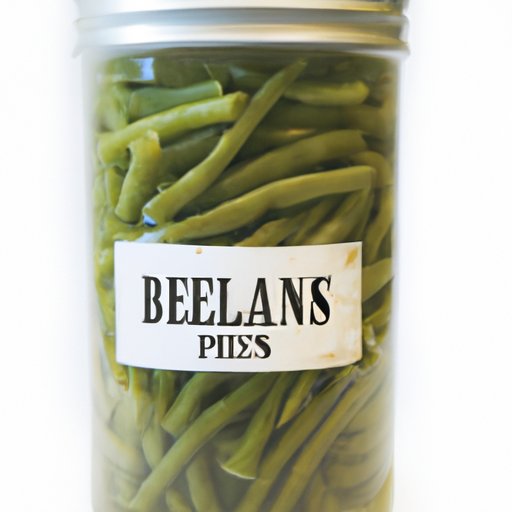
Introduction
Green beans are a staple in many households, and there’s no denying that they’re a healthy addition to any meal. However, when it comes to choosing between fresh and canned green beans, many people wonder which option is better for their health. In this article, we’ll take a closer look at canned green beans and explore their pros, cons, and health benefits. We’ll also provide some interesting recipes and offer tips on how to select the best canned green beans to incorporate into your diet.
Pros and Cons
One of the main benefits of canned green beans is their convenience. They are readily available in most grocery stores and can be easily stored in your pantry until you’re ready to use them. Canned green beans are also cost-effective, making them a budget-friendly option for families on a tight budget.
However, one of the drawbacks of canned green beans is that they may lose some nutritional content during the processing stages. Additionally, some canned green beans may contain added sodium or preservatives, which can be harmful to individuals on a low-sodium diet.
Health Benefits
Canned green beans are an excellent source of fiber, vitamin A, and vitamin K. They also provide calcium and iron, making them a well-rounded source of nutrition. Studies have shown that consuming green beans regularly can promote overall health and reduce the risk of chronic diseases such as cancer and heart disease.
Recipes
If you’re looking for some new and interesting ways to incorporate canned green beans into your meals, look no further! Here are a few recipes that are easy to make, healthy, and delicious:
- Green Bean and Mushroom Bake: Combine canned green beans, mushrooms, garlic, and cream of mushroom soup in a baking dish. Top with breadcrumbs and bake for 20 minutes at 375 degrees.
- Green Bean Salad: Toss canned green beans with cherry tomatoes, sliced red onion, and feta cheese. Drizzle with olive oil and white wine vinegar for a delicious and healthy salad.
- Green Bean Soup: Combine canned green beans, chicken broth, and diced potatoes in a pot. Simmer until the potatoes are tender, then blend with an immersion blender for a thick and hearty soup.
Nutritional Comparison
When it comes to comparing canned and fresh green beans, there are a few key differences. While both options are a great source of nutrition, canned green beans may have slightly lower nutrient content due to the processing they undergo. However, boiled fresh green beans have been shown to lose some of their vitamin C, making the comparison between canned and fresh green beans less clear-cut. Ultimately, the choice between canned and fresh green beans comes down to personal preference and dietary needs.
Sustainability
Many people do not consider the impact that their food choices have on the environment, but it’s important to note that canned green beans can be an eco-friendly choice. By consuming canned green beans, you’re helping to reduce food waste and transportation costs while supporting sustainable farming practices. Additionally, most manufacturers use eco-friendly packaging materials to reduce their carbon footprint.
Consumer Guide
When selecting canned green beans, it’s important to look for options that are low in sodium and have no added preservatives. Check the expiration date to ensure that the beans are fresh and look for cans with minimal damage or dents. Some recommended canned green bean brands include Del Monte, Green Giant, and Libby’s.
Conclusion
So, are canned green beans good for you? The answer is yes! While there are some drawbacks to consuming canned green beans, they are still a healthy and cost-effective option that can be easily incorporated into your diet. By selecting high-quality brands and being mindful of your nutrient consumption, you can enjoy canned green beans as a delicious and nutritious addition to any meal.




